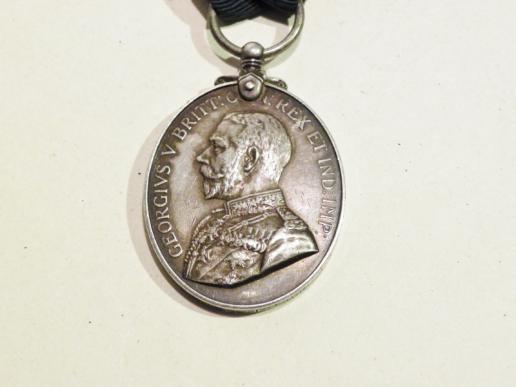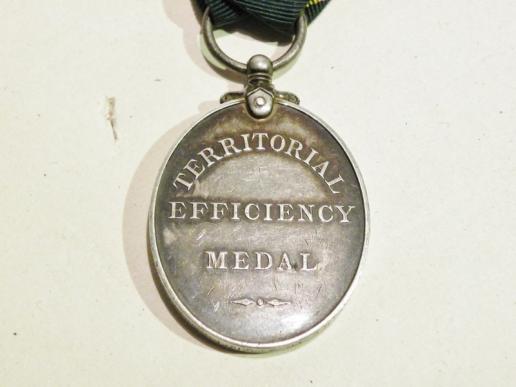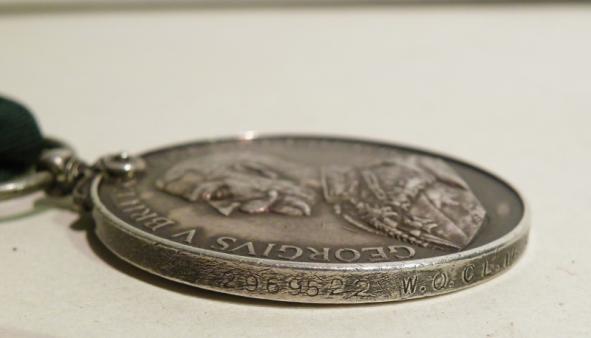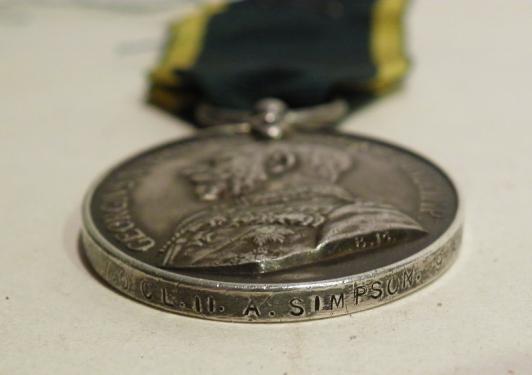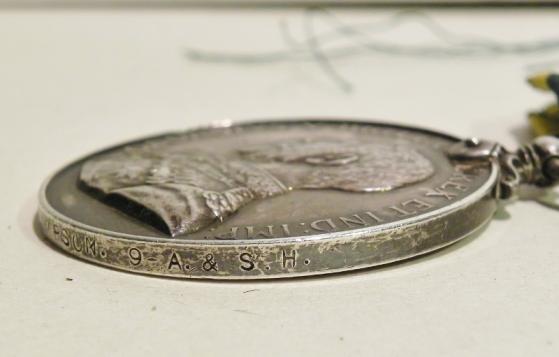Territorial Efficiency Medal 1921-1930. 9th A & S H
The scarcer TEF which bridged the gap between the Territorial Force Efficiency Medal and the Territorial medal for Efficient Service. this one is correctly named to; 2969522 Warrant Officer 2nd class. A Simpson. 9th battalion Argyle & Sutherland Highlanders, the The Dumbartonshire battalion.
In 1914 to the early part of 15, 1/9th were being trained and equipped in preparation for their departure to France. On the night of 19/20th February 1915 the Battalion sailed to Le Harve and was soon engaged in the Ypres Salient, attached to the 81st Brigade, 27th Division. On 10th March 1915 the Battalion took its first casualties, with 5 men wounded. 10 days later a Corporal MacKay became the first 9th Argyll to be killed in action. For the first two months of their posting in Ypres the 9th’s casualties were relatively light, it was their turn to suffer. From the 10th to the 17/18 May 1915 the Battalion took part in fierce fighting and had to bear heavy German bombardment. On the 10th of May itself the Battalion losses amounted to 12 officers and 300 men, including the CO Colonel Clark. Sadly the losses continued to mount. A terrible gas attack which was launched by the Germans on 24th May all but overwhelmed the men, who had been ordered forward to support the Royal Dublin Fusiliers. When the Battalion was formally withdrawn from the front that day its strength mustered just 2 officers and 85 men.
Tragedy haunted the Battalion even at home. Captain Findlay and Lieutenants Jackson, Kirsop and Bonnar left the front for a spot of leave that same month of May. Two days after their departure 3 of them were killed in the train disaster near Gretna.
By the end of the terrible month of May 1915 the 1/9 were instructed to amalgamate with the 7th Battalion, who had also suffered heavy losses, under the title “The Composite Battalion of the Argyll & Sutherland Highlanders”. The amalgamation was intended as a temporary measure and would exist until such times as reinforcements could come from 2/9th Battalion. Six months after the terrible losses of May 1915, the Battalion had been brought up to a strength of 25 Officers and 461 other ranks.
But the Battalion could not be brought up to its required strength. Because of the great demands of industry in the county, the problem of obtaining new recruits in Dumbartonshire was apparent to all. Eventually the Battalion had to be disbanded. Everything was done to preserve the local identity of the Dumbartonshire Territorials but sentimental feelings could not be allowed to stand in the way of the efficiency of the Army as a whole.
The Battalion no longer existed but the Officers and Men of the 1/9th continued to serve in other battalions and other regiments. In its short time in France it was mentioned in dispatches 3 times and personally complimented by Field Marshall Sir John French.
A very interesting medal for research, which comes in very good condition apart from some contact wear on the rim, which would suggest that it was once mounted as a part of a group at some time.
Code: 25472
98.00 GBP


